As a surface designer, adding new designs to your art licensing portfolio is key because you want to present a full body of work for potential clients to choose from. Sometimes ideas appear out of thin air and spark creativity right away. Or you might feel the energy to create, but nothing comes to mind. This is super frustrating! I think every creative person has experienced this, me included.
So what can you do about it?
Here is a list of my top 10 ways to find new surface design inspiration. You can use them all for pattern design, illustration work, or other creative fields.
1. Look At Drawing Challenges
Month-Long Challenges
Keep your eyes open for seasonal or recurring drawing challenges. And there are lots to choose from, like Ello Lovey’s monthly challenge. This way you get 31 new ideas for patterns or collections.
If you are up for an even bigger challenge, try combining two different lists and merge the correlating days. This way you get some odd combinations, which make for fun results! You can find different prompt lists if you search for the hashtag #promptlist on Instagram.
There are also challenges for surface designers specifically, like Sketch Design Repeat’s Daily Sketch Challenge. Or Make It In Design’s Pattern Mood Challenge.
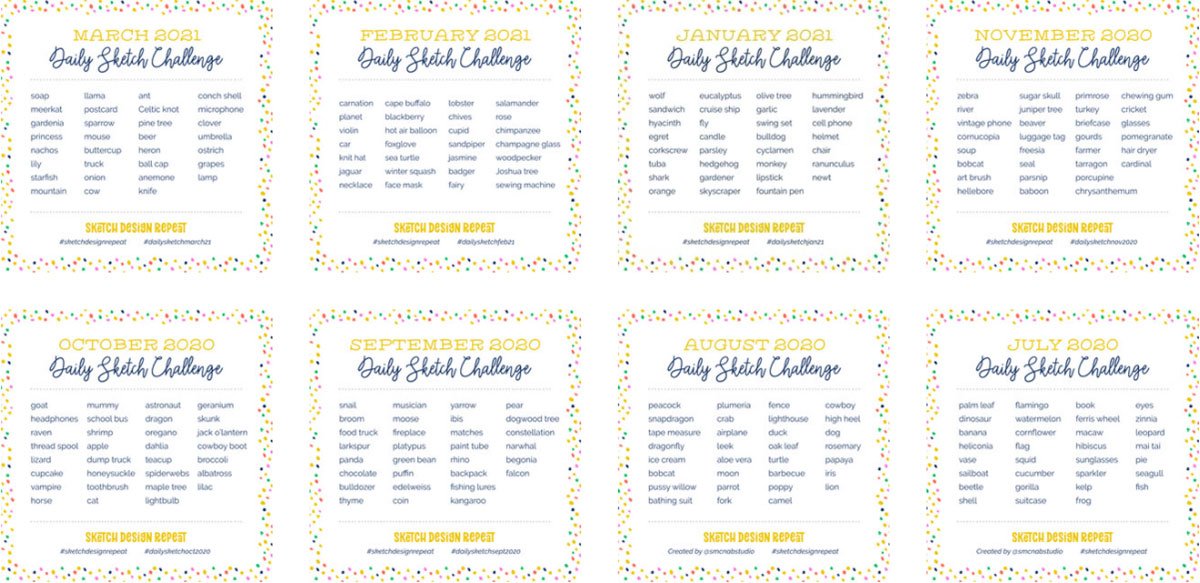
Single Challenges
If a month-long challenge seems too daunting to start, remember: you don’t have to do it as a challenge. Just use the prompts to spark ideas. And there are shorter challenges that are easier to incorporate into your busy life.
If you subscribe to Sketch Design Repeat’s newsletter, you currently get a single prompt every month — straight to your inbox! The Portfolio Power-Ups Challenge prompts even include a mood board, ideas to get you started, such as phrases or variation ideas, and other helpful resources!
Character Design Challenge is aimed toward illustrators, but the themes can be adapted to pattern design as well. They post a new theme every month, so I’m sure they’ll include a theme that suits your interests and style, especially if you like to draw characters and animals.
Start Your Own Challenge
Don’t be restricted by what’s already out there. You can easily make up your own list and target it specifically to what you’d like to improve in or to flesh out certain categories of your portfolio. It’s even more fun if you do this with a friend or accountability partner and create a list for each other. This way you will receive words you wouldn’t have come up with yourself.
2. Start With A Color Palette
Maybe you struggle with picking the right colors (like I do sometimes) or you just want a starting point that’s not theme-based. That’s when I start a pattern with a set of colors in mind. There are great resources out there to help you:
-
Lucia Sanguinetti-Jonescheit is a surface designer who offers free downloadable palettes in her newsletter each month.
-
There’s also colours.cafe’s Instagram page. They currently have more than 700 palettes available and post new ones daily.
-
Pinterest is another source of inspiration. Sketch Design Repeat has a great board just for color palettes.
Another way to go is to choose a photo or illustration and pick 2 to 6 colors from it. This is especially helpful if you want your pattern to evoke a particular feeling or mood.
Just make sure you don’t copy anyone else’s work. If you like the color choices of a specific pattern, pick the colors and create your own swatch sheet. Save it without the pattern for future use. This way you’ll remember the color combination, but you won’t end up copying the pattern itself.
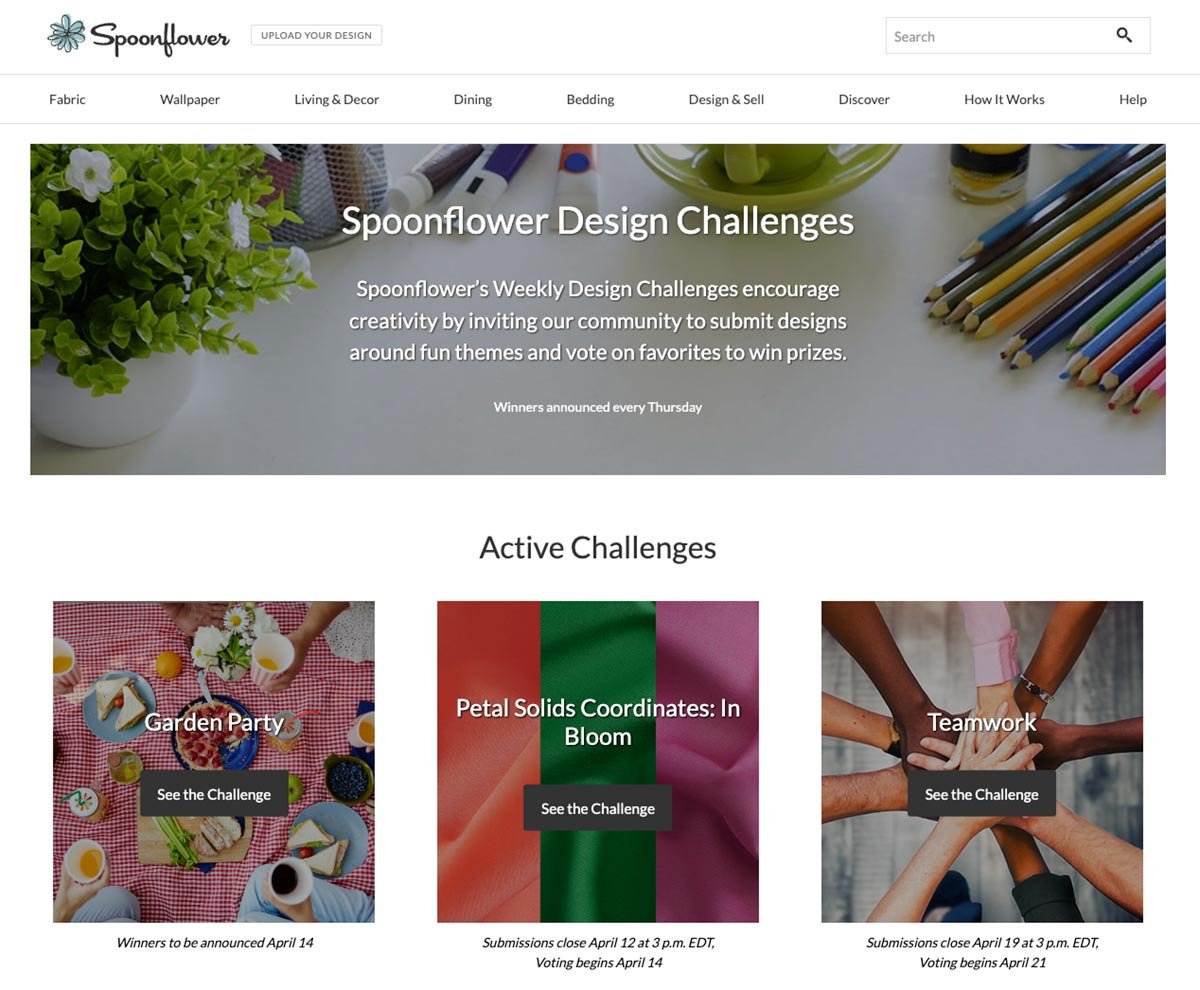
3. Check Out Spoonflower Challenges
They’ve been doing them weekly since 2010 so if you do the math, that’s a lot of challenge topics ready for you to use.
Don’t worry if you don’t want to publish your designs on their site or can’t finish them in time for the deadline. I don’t worry about it either, but I like to browse their themes from time to time to gather new inspiration.
You don’t even have to follow their instructions to a T. Let’s say you pick their 2022 theme, Year of the Tiger, which was made with the Chinese New Year in mind. Switch it up! The new idea for an upcoming pattern could now be “Tigers for Kids,” “Tigers in Blue,” or “Striped Animals.”
4. Create Some All-Time Favorites
Floral and Christmas patterns are always welcome additions to any portfolio as they are in high demand with art buyers and clients. So if you ever happen to be uncertain about what to design — stick with evergreen motifs.
If you are still looking for more inspiration on how to make these prompts more interesting for you, add in a personal twist. This can be a character, animal, or an unusual color palette. Or try out new media to get out of your comfort zone and see where you’ll end up.
Floral themes could be “Desert Flowers” or “Grieving Bouquet.” And Christmas can be “Tropical Christmas” or seasonal themes like “Winter Items” or “Hanukkah.”
Other all-time themes you can design for are: Easter, Birthday, Get Well, Mother’s & Father’s Day, and many more.
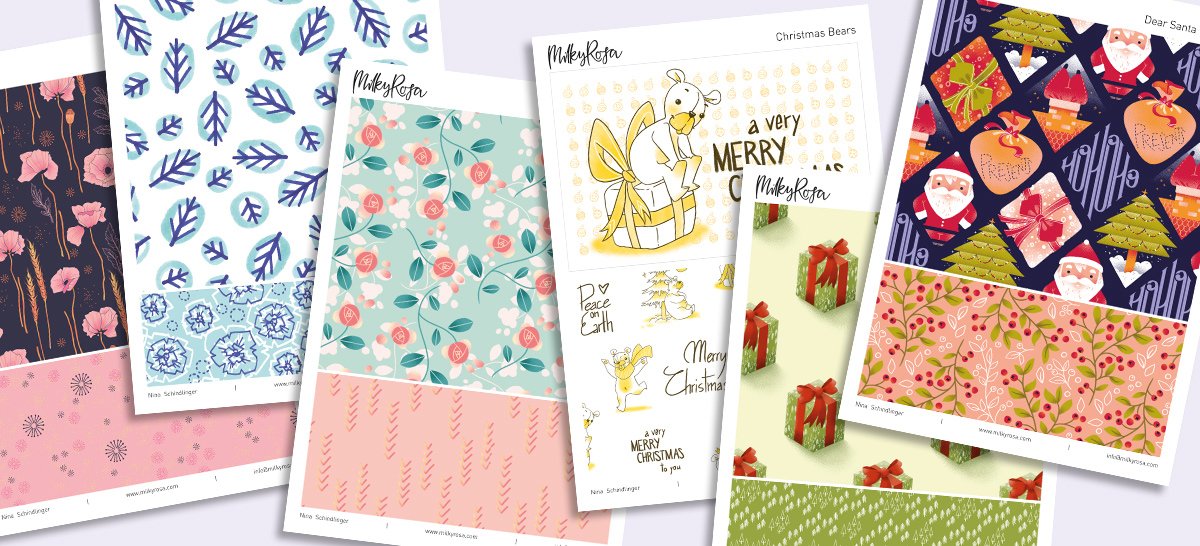
5. Create for Dates of the Year
Certain categories, like greeting cards, need artwork relating to specific dates and themes. Mother’s Day, Christmas, and birthdays are the most popular themes. It’s a great idea to create evergreen pieces for those, but if you are looking for something a bit more unique, look at all the other days of the year.
Some of those coming up in May are:
-
National Lemonade Day (May 1)
-
School Bus Drivers Day (May 1)
-
Poem on Your Pillow Day (May 3)
-
National Paranormal Day (May 3)
-
International Firefighters’ Day (May 4)
-
International Tuba Day (May 6)
-
World Donkey Day (May 8)
-
Iris Day (May 8)
I use Days Of The Year to look up even more days and dates.
6. Pick A Single Item
Patterns don’t need to be super complicated and intricate to be effective. I’ve seen a lot of patterns that I’ve fallen in love with that use a single motif. So why not do the same and pick a random object or animal? It’s really fun if you look around you and pick something from your house or apartment.
What I love about surface design: Everything can be turned into a pattern and be made to look beautiful in its own way.
So don’t shy away from picking strange objects like hair accessories, plants, your favorite pair of headphones, or a pen.
Even though you only pick one object, you can still vary the motif by re-drawing the same item several times, using different colors or changing up the object ever so slightly.
Instead of drawing just one pen, you could draw your top five pens and turn them into a design. Now imagine if you drew each pen motif with its real counterpart!
You see, just a single object has a lot of potential for a great and varied finished piece.
Want to save this post to find it later? Pin one of the images below.
7. Use Your Work-In-Progress Folder
Just recently I created a pattern using the files in one of my Work-In-Progress (short: WIP) folders. Doing this is great if my energy level is a bit low or my mind is just not set on super-creative-mode. This way you don’t need to start from scratch and work just flows a bit easier.
I keep my WIPs organized similar to my digital portfolio. I have folders for all the main categories, such as florals, animals, Christmas, so I can browse the folders and look into any category that triggers my interest. This will most likely result in a better design outcome than forcing a theme onto myself that I’m not feeling at all.
I draw a lot of sketches in my notebook or doodle on a piece of paper and these pieces can be easily forgotten. To not let that happen, I take a quick photo with my phone and add the picture to its designated folder.
It’s also a great idea to keep a list of some sort with themes, words, or phrases that trigger inspiration. So whenever you feel like you need a starting point, you know exactly where to look. Of course, this method can also be done offline. Just make sure you keep a dedicated box or drawer and add all doodles and snippets of ideas to it regularly.
8. Use Idea Jars
This is one of my favorite methods to trigger ideas — either for surface design or illustrations. To me, the surprise factor is super fun because I never know what the result will be!
Here is how it works: Keep one jar per category. These could be objects, colors, adjectives and so on. Write down a lot of words that come to mind, fold them up, and put them in their designated jar.
Whenever you are looking for new design inspiration, shake the jars and pull out one or more pieces of paper from each one. You’ll end up with an odd combination of words. Now start creating and put them all into a cohesive design or collection!
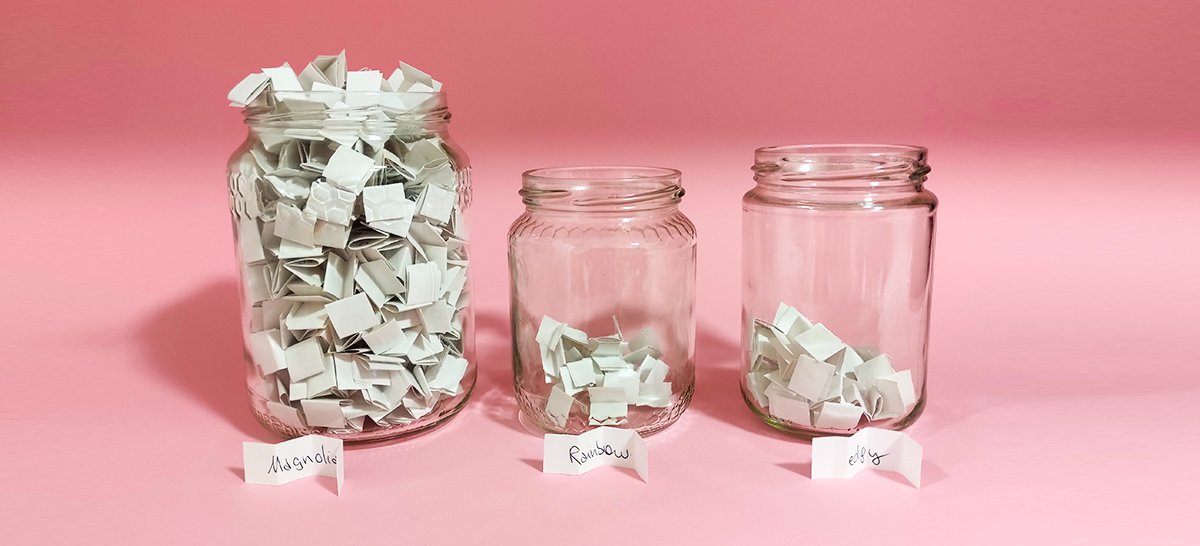
Here are some ideas to get you started:
-
Objects: fruits, food, fantasy creatures, natural objects, clothing, stationery, sewing notions…
-
Colors: blue, green, yellow, rainbow, black and white, monochromatic, neon, Pantone Color of the Year…
-
Adjectives: gloomy, fresh, moody, calming, bold, edgy, round, childish, mature, straight, energetic…
Even if you get the same object twice, the colors and the adjectives will always differ. And the pattern for “tiger, rainbow, round” will look entirely different from “tiger, monochromatic, moody.”
You can keep on adding new words to your jars whenever you feel like it. This way, you’ll never run out of ideas again!
9. Look At Other Surface Designers’ Work
If you see a specific pattern from another designer you like, write down exactly what it is you appreciate. Is it the colors, the subject matter, the layout, or a technique they used?
Be very specific about this, because it will make sure that you don’t copy their work. I’d even suggest not saving the image at all. By only keeping notes of certain aspects, you are way less likely to end up with a copied version of their work.
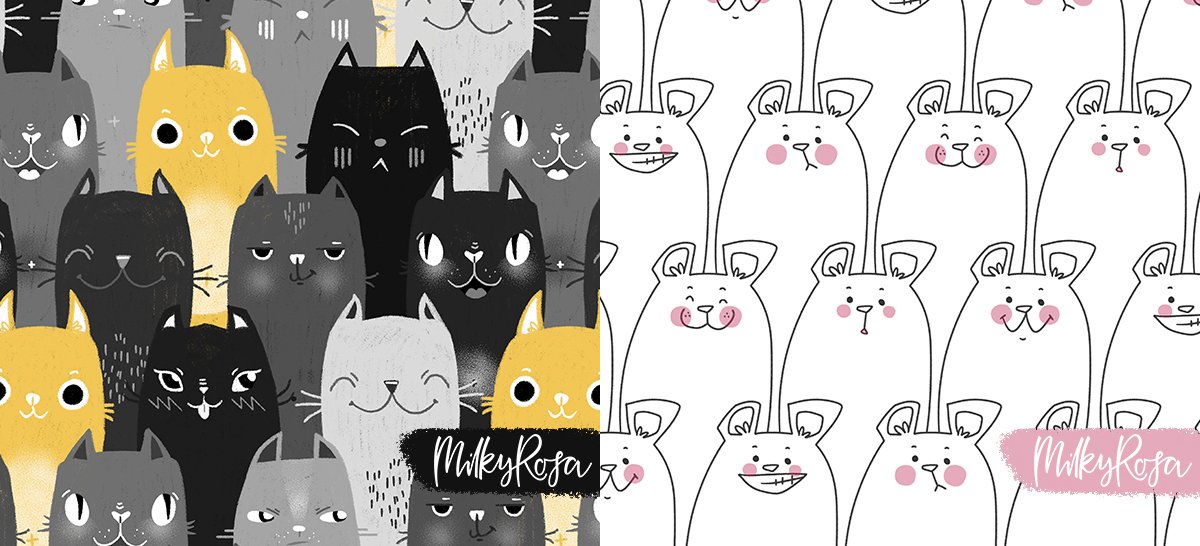
Let’s say you already have this cat pattern as seen above. Write down which parts you really like about it. For me, it’s the following:
-
The stacked layout
-
The cheerful characters
-
That it’s for children
When I got around to creating a new design, I used these three points to get started. My end-result ended up looking completely different from the original image, but it kept in line with what I adored about the original pattern.
10. Re-interpreting Your Portfolio
Start by picking any of your existing patterns. Now add an item, character, new color scheme, or medium to the mix. This way you still draw what you love, but it’s not an exact replica.
-
Let’s say you already have a daisy pattern. Now draw a new daisy motif, but add a character like a hippo or an item like shoes.
-
Do you draw a lot of character art and your favorite pattern is of tigers in the jungle? Have the tigers go on a beach holiday.
-
Or you created a Christmas bauble pattern in red and green. Change it up by making a new bauble pattern, but only use blues and whites.
My personal go-to topic is cats. At craft markets, people seem to really like my black and white cat pattern. So I wanted to create a new design based on black and white cats. Instead of using a graphic style like on the left, I opted for a softer look and ended up using watercolors.
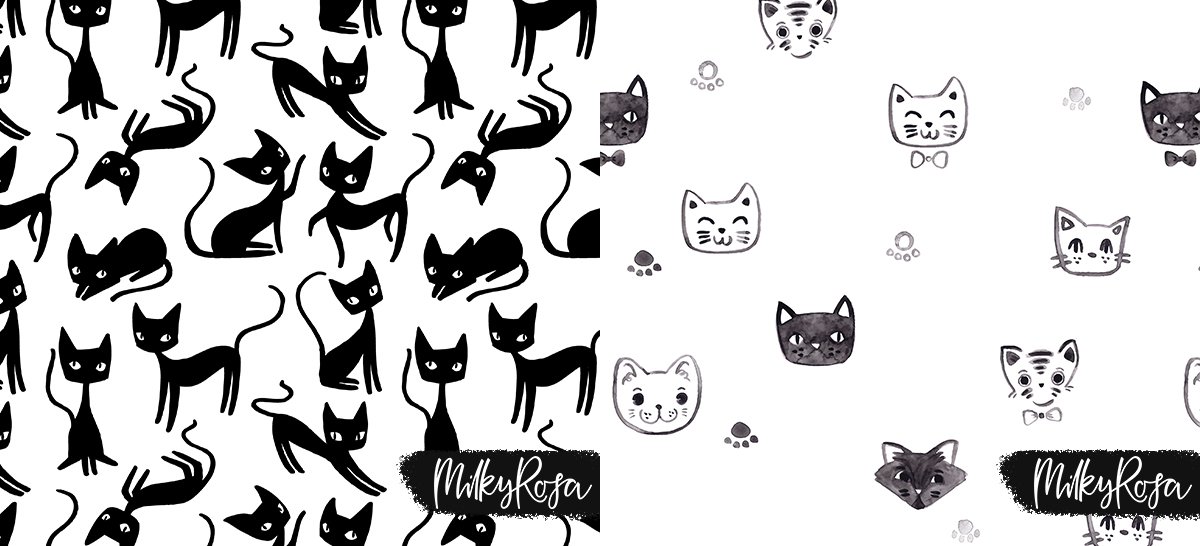
Make sure to re-draw the motifs and not just re-colour them. Otherwise, you might have problems licensing them to different companies later on.
None of these tips will cure all of your inspiration troubles, but they can help point you in the right direction. And keep your options open, because the method that worked wonders last time might not work as well tomorrow.
Changing it up again and again keeps everything fresh and interesting. I like to keep them all in mind because I never know what sparks my creativity in the end. Happy creating!
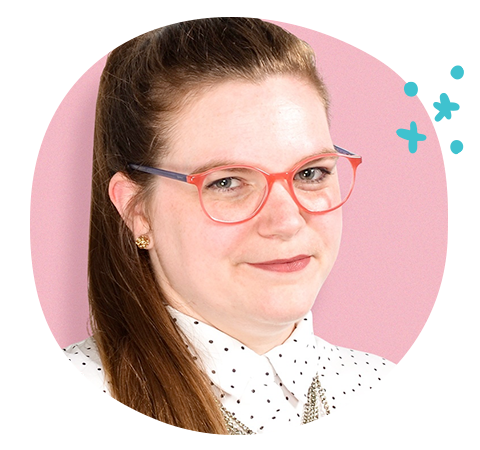
Written by Nina Schindlinger
Website: www.milkyrosa.com
Instagram: @milkyrosaillustration
Nina is an Austrian Illustrator & Surface Designer who got her Illustration degree from Ballyfermot College of Further Education, Dublin. Her design style is playful, soft and charming with lots of textures for people who are still young at heart. She loves cats, black tea and is addicted to pink.
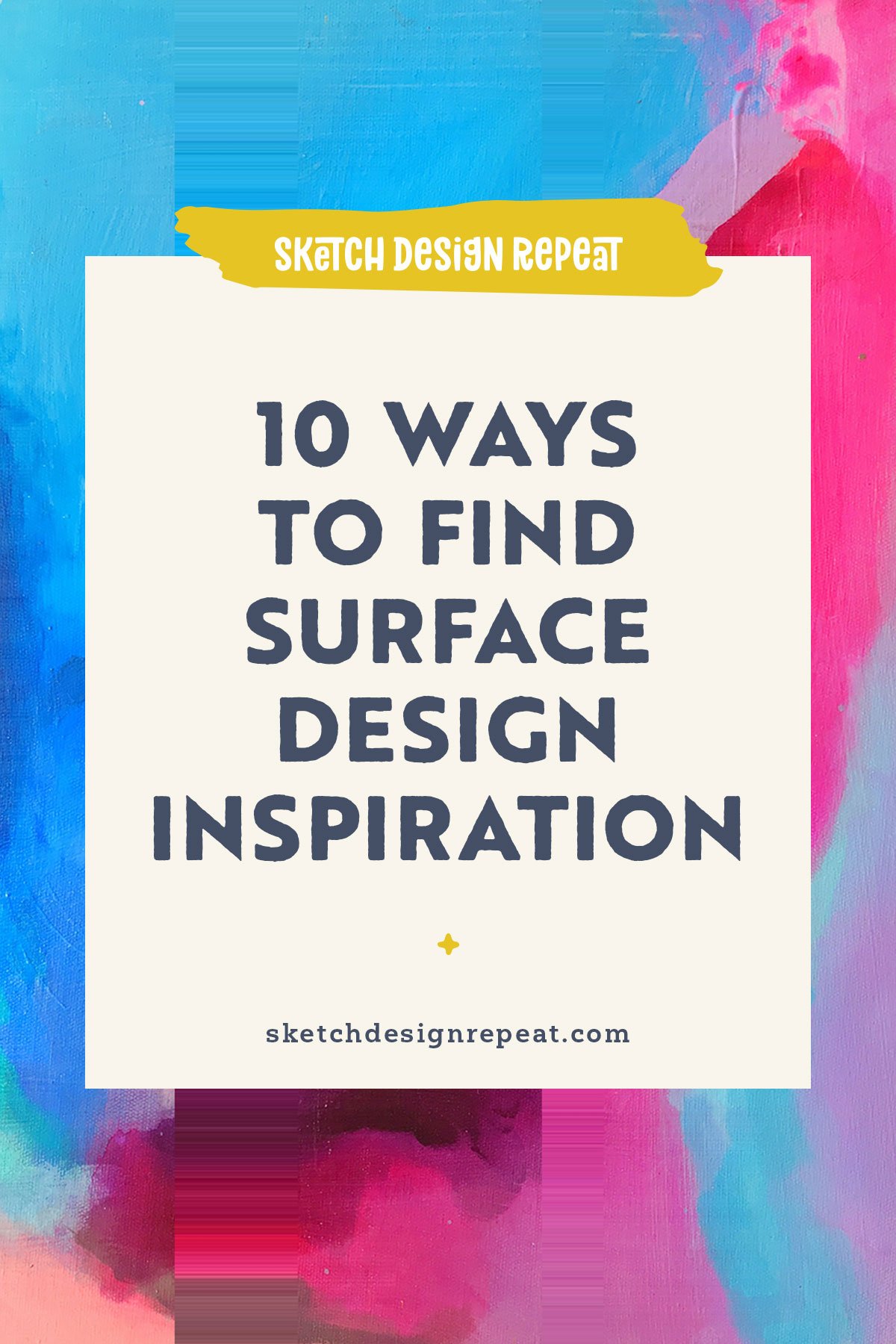
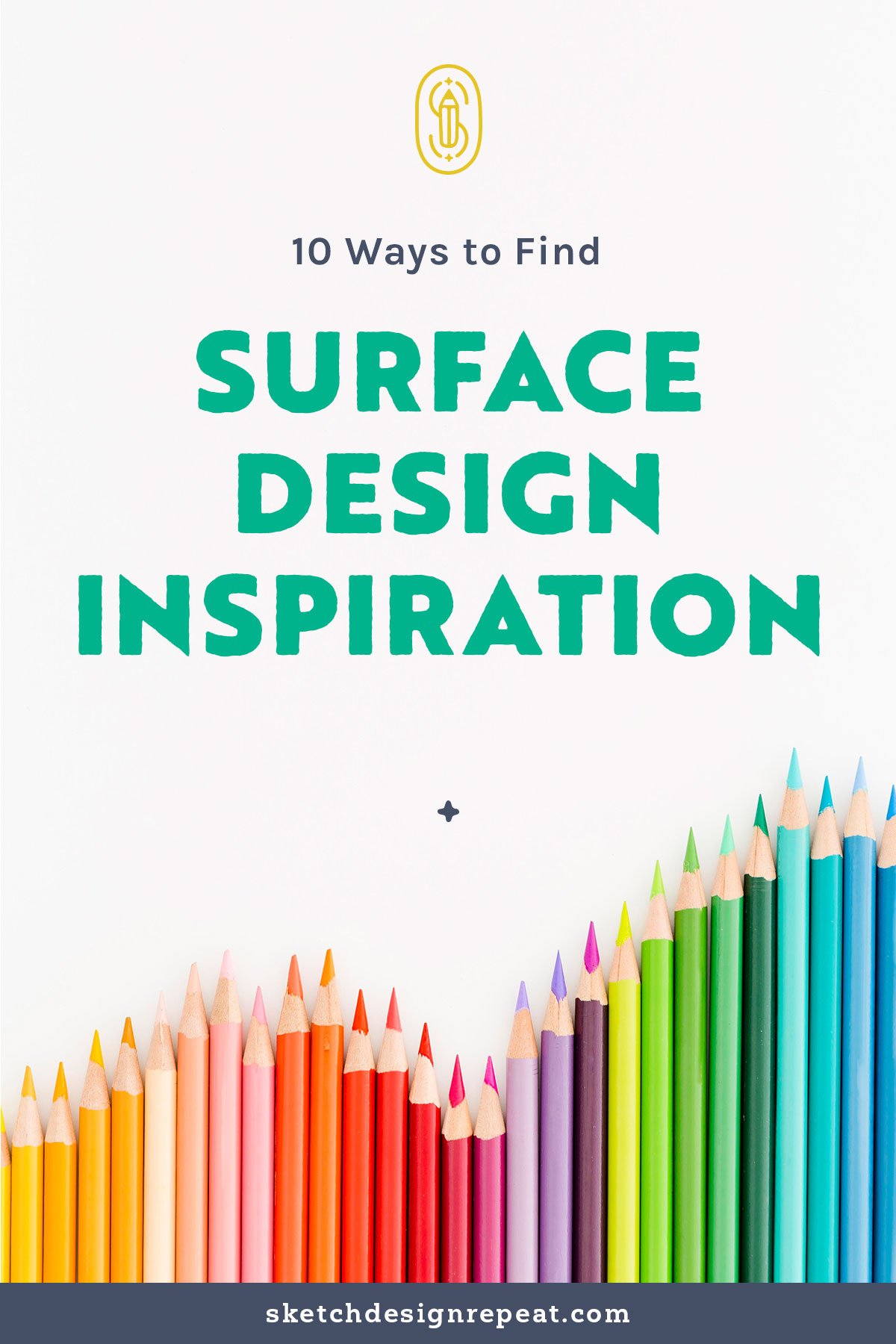
Really wonderful and rich content. Enjoyed it allot. Thank you.
A great post full of inspiration ideas. LOVE your work examples @milkyrosa
I enjoyed this post so much!